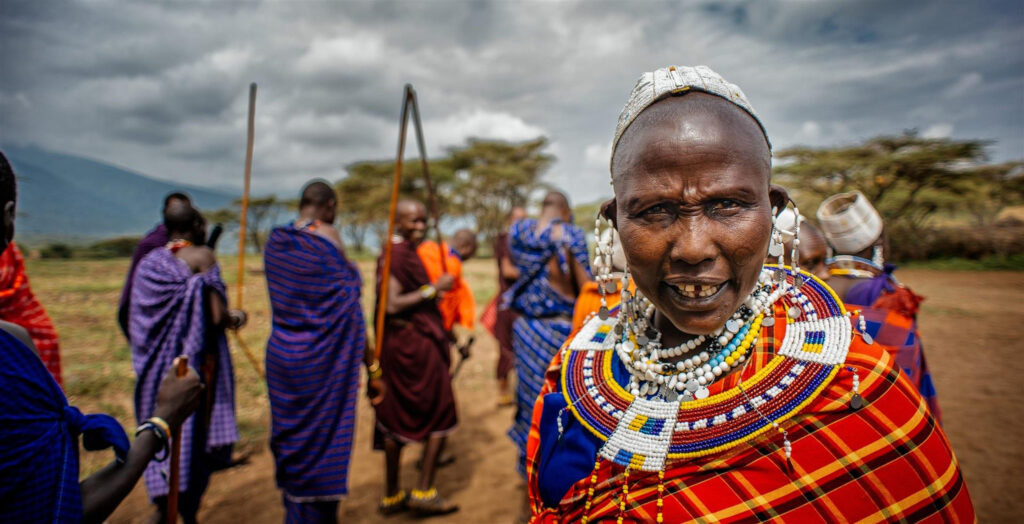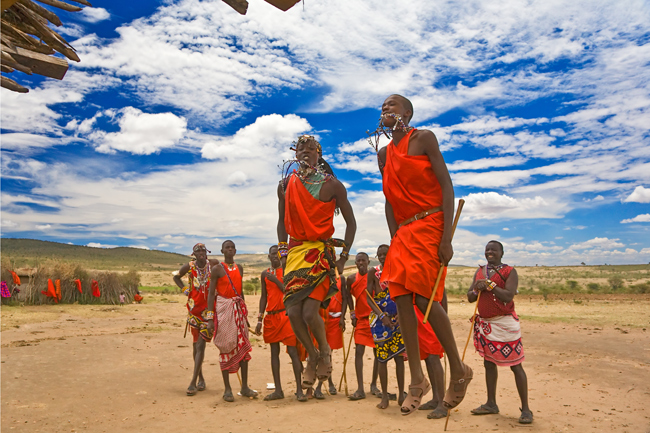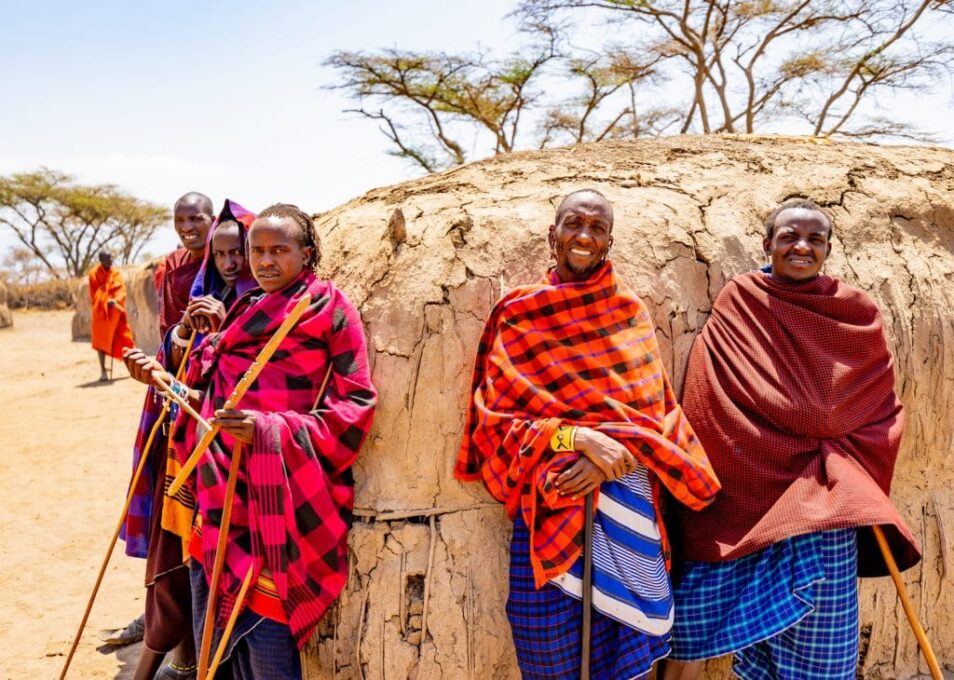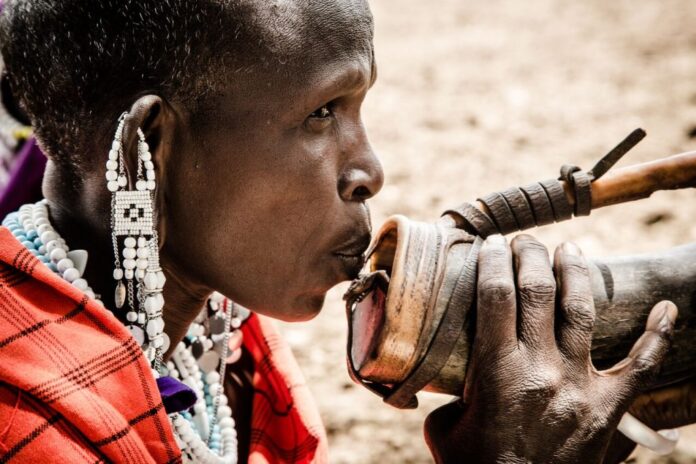It is common knowledge that the act of Spitting either shows annoyance, disdain, disagreement, or anything unpleasant in the eyes of multiple cultures and traditions worldwide. Spitting, in many cultures, is considered an unhealthy uncivilized gesture. However, the Maasai tribe of Kenya and northern Tanzania have a dissenting view.
Despite making up just approximately 1% of the population, the Maasai tribe is well-known on a global scale and is now a popular tourist destination. And its peculiar accustomed habits of spit greeting have garnered more popularity than notoriety over the years. That leaves a common question: why does this peculiar tribe engage in spit greeting?
Why the Kenya and Tanzania’s Maasai Tribe Spit
Spitting is a symbol of respect and blessing among the Maasai people. Before shaking hands, the Maasai spit into each other’s palms. Families, friends, and strangers will spit on newborns to wish them success and prosperity. On the day of the wedding, fathers honour their daughters by spitting on their foreheads.
This behaviour is not only unusual but also exceedingly risky. The risk of transmitting infections is significantly increased by spitting. To wish newborns luck and long life, parents, family members, and friends spit on them.
Maasai fathers are known to bless their daughters by spitting on their breasts and forehead during wedding ceremonies. Due to their long-preserved culture, the Maasai are one of the most well-liked and distinctive tribes in Africa.
They live in a relatively small area in the Kajiado and Narok municipalities after some of Kenya’s game reserves occupied their vast territory.
READ:
All you need to know About The Maasai Tribe
Origin & General Facts
Due to where they dwell, which is very close to the numerous wildlife parks of the African Great Lakes, as well as their distinctive customs and attire, the Maasai are considered a Nilotic ethnic group. They dwell in northern, central, and southern Kenya and northern Tanzania.
They are probably part of the most famous local populations internationally. Maa is the native tongue of the Maasai. Swahili and English, the official languages of Kenya and Tanzania, are spoken by most Maasai people, except for a few elderly individuals who reside in rural regions.

When the Maasai arrived, they forcefully uprooted several ethnic groups that had previously established settlements in the area. In contrast, other groups — primarily the Southern Cushitic tribes — were incorporated into the Maasai culture. Some early Cushitic groups were also assimilated by the Kalenjin’s Nilotic forefathers.
Based on verified reports from the 2019 consensus, the Maasai population in Kenya is over 1 million. But it is worthy of note that, in reality, this number might either be way more or a little bit less because many Maasai see the census as government intrusion and either refuse to participate or knowingly supply fake statistics.
Source of Food
The cattle, which are the Maasai’s primary source of food, are crucial to their traditional way of life. Cattle and kids are valid indicators of a man’s prosperity. The more kids, the better; a herd of fifty cattle is respectable. A guy is seen as impoverished if he possesses a lot of one but little of the other.
The cattle of the Maasai provide all of their dietary requirements. They consume the flesh, drink the milk daily, and occasionally consume the blood. At ceremonial gatherings and on certain occasions, bulls, goats, and lambs are killed for their flesh.
The Maasai had previously relied entirely on their livestock, but as the number of cattle has decreased, they have become more reliant on crops like sorghum or rice (their likes).
Dressing Styles
When a kid reaches the age of three, they give them a name and shave everything off of their heads except for a cockade-shaped tuft of hair that grows from the back of the neck to the top of their head. The only Maasai who maintains long hair, braided in finely braided strands, is a warrior.
At an extraordinary meeting called Eunoto, a warrior is promoted to the rank of junior elder. Elders must have short hair; past warriors’ lengthy hair is chopped off. At the Eunoto meeting, special recognition is given to warriors who refrain from engaging in s3xual activity with women who have not completed the “Emuatare” rite.
It would represent the female’s recovery. Boys who will be circumcised have their hair shaved two days beforehand. The long braided hair of warriors who pass through the Eunoto and become seniors is shaved off.
Like other tribes, the Maasai frequently expand their earlobes and pierce them. Both men and women wear metal rings on their strained earlobes. The lobes have been stretched and pierced with various objects, including stones, empty film canisters, elephant tusks, twig bundles, and thorns for piercing.
Women frequently pierce their ears at the top and lobes with beaded jewellery. Male circumcision among the Maasai is a standard procedure that marks the passage from adolescence to adulthood. Also, the Maasai Women are circumcised.
Entertainment
Traditional Maasai music has a chorus conductor, or olaranyani, who sings the melody while a chorus of singers, singing harmonies, supplies the rhythms. Drone polyphony is commonly used by Maasai, in contrast to most other African tribes.

Women perform praise songs for their boys as well as lullabies and humming. Female vocalists often use nambas, the call-and-response routine, repetitions of meaningless words, monophonic melodies, repeated phrases sung after each line in a descending scale, and singers who answer to their verses.
Maasai women often sing and dance together when they congregate in large groups.
Health Care
Due to the expensive expense of Western therapies, the Maasai people choose to make their medications from natural ingredients. These medications come from plants such as trees, bushes, stems, roots, etc. Then, these may be utilized in various ways, such as being cooked in soups and consumed to enhance digestion and purify the blood.
Some of these treatments can be used to cure or prevent illnesses as well. The Maasai people often add herbs to various diets to help digestion and prevent upset stomachs. A vital aspect of Maasai life is the use of plant-based medicines.
Attires & Dressing Styles
A person’s social standing within the Maasai lifecycle, as well as their ethnic group affiliation and engagement in a pastoralist way of life, are all represented by their Maasai dress. They can choose from this the duties and responsibilities appropriate to the period of their life.
In addition to their clothes, their jewellery can reveal a person’s gender, marital status, and age. Traditional Maasai attire conveys not just group identification but also a range of symbolism. For several months after getting their navels shaved, young men, for example, dress in all black.

Red, however, is a preferred hue. African patterns in several colours are also worn, as are blue, black, striped, and checkered fabrics. In the 1960s, the Maasai started switching from sheep and calf skins to manufactured cotton textiles.
Conclusion
As a result of some of Kenya’s game reserves claiming a portion of their vast land, the Maasai now live in a much smaller region in the Kajiado and Narok districts. The Maasai are regarded as one of the most distinctive tribes in Africa for their well-preserved culture because of their unique way of life, which is unlike any other society.





